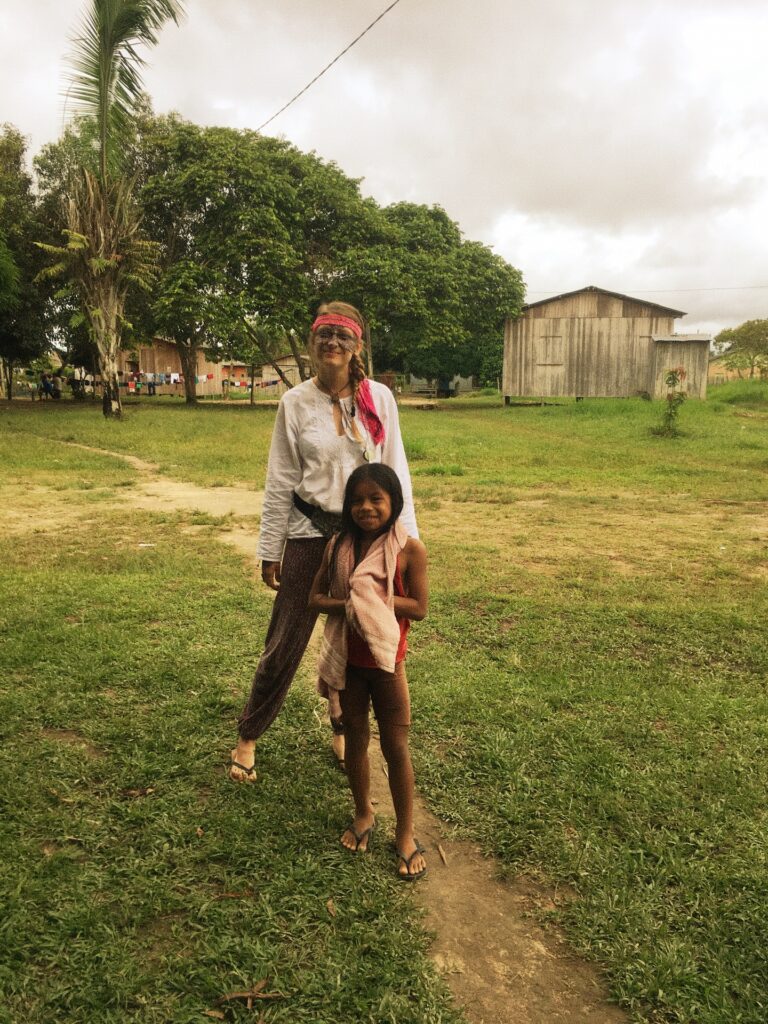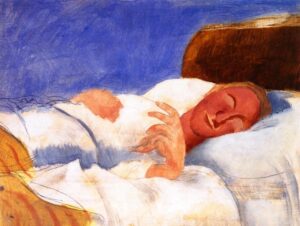Czech scientists are conducting research in South America among indigenous peoples who use the psychoactive brew Ayahuasca. How does one feel amidst untouched nature, and what have the researchers discovered so far?
It has been seven years since the team of my colleagues from the National Institute of Mental Health, led by Dr. Tomáš Páleníček, received a grant from the Neuron Foundation enabling them to launch a research expedition into the heart of the Amazon rainforest to visit the indigenous tribes who drink Ayahuasca. This brew most commonly consists of a combination of two plants: the Banisteriopsis caapi vine is specially prepared and boiled with the leaves of the chacruna shrub. Chacruna leaves contain DMT, a substance often dubbed the “molecule of the soul.” Scientists from around the world have been studying DMT for decades.
The main purpose of the research expedition is to better understand and describe the effects of Ayahuasca, specifically when used in traditional ritual settings. The team of scientists will focus mainly on neurobiological activity, brain synchronization, and the long-term effects of Ayahuasca on mood, well-being, its influence on harmony with nature, and interpersonal connection. The outcome will be behavioral and EEG studies.
In order to measure what is happening in the brain, researchers use state-of-the-art portable EEG devices that look a bit like futuristic swim caps from a sci-fi space station. These caps were created by Frank Zanow’s Berlin-based company, ANT Neuro. Frank Zanow and ANT Neuro graciously lent these portable EEG devices to Palenicek’s team, and for his generosity Frank has been nominated as an honorary member of all past and future expeditions.
Expedition
Several meetings have already taken place, leading to the intertwining of the scientific and indigenous worlds. Ninawa, the president-elect of the Huni Kuin, an indigenous culture of the Amazon rainforest, visited Prague, and two expeditions to South America have taken place. The first took place in 2019 in the small town of Santa Rosa do Purus in northern Brazil in the state of Acre, and then the Mayantuyacu center in Peru, led by shaman Juan Flores of the Ashaninka, another indigenous culture.
I had the opportunity to participate in the first expedition to Santa Rosa do Purus. On this trip, our goal was to test the EEG equipment. Also, we were accompanied by a film crew of Czech director David Čálek. They hope to release a movie documenting these studies.
The second expedition, which took place last year (2023), was supported by the PSYRES Foundation for Psychedelic Research. This expedition again tested the upgraded equipment and studied equipment studied the effects the traditional environment and associated rituals have on the brain of the participants and also, if there is an aspect of synchronization among the study group. on the impacts of Ayahuasca. During this expedition, colleagues once again visited the friendly Peruvian center Mayantuyacu where healing with Ayahuasca takes place.

Travel Notes
The first expedition was tasked with testing the technology, as well as to determine how well the team could function in a challenging environment. The team also had to map the ritual process, and, naturally, experience the psychedelic brew. In short, we were sent to gather experiences from which data would be collected in the following years.
Anyone who has ever visited the rainforest has likely felt the immense power of nature – thousands of shades of green, constant buzzing, orchestral bird songs, and also the awareness that one cannot be anywhere else but here and now – else something might bite, sting, or scratch you.
Visiting the rainforest changed me. For the first time in my life, I truly felt at home. For the first time in my life, to the marrow of my bones, I felt that I was part of nature, that it wasn’t me and it, but that together we formed “us,” and also that I am here for it just as it is here for me. This deep realization occurred within me even before the second day darkened, and we suddenly all sat in a maloca (a traditional house) and waited for the call to approach and drink the brew that indigenous peoples venerate as a sacrament and use for healing and connecting with one another, with themselves, and also the nature around them.
Around Ayahuasca, there are many myths and beliefs. Especially in our corner of the world, where we have somewhat lost touch with our own roots and occasionally clumsily approach the roots of others, we misinterpret many of these myths and beliefs. We try to understand, copy, and mimic other cultures, grafting them into our civilization, but often without adequate appreciation, and underestimating the need for humility, respect, and reciprocity. The truth is that this sad sigh could fill an entire separate article.
Insights into Life
Although I perceive that psychedelics are not for everyone, for me personally the experience with Ayahuasca was something that I would call a blessing. I feel that we all have a strange haze around us, through which we see only a blurry version of the world and each other. This haze prevents us from looking around and seeing things as they really are, in their pure essence. Ayahuasca, like other psychedelics, provides an opportunity to penetrate beneath the surface. For a moment, the haze dissipates and allows a perspective that may otherwise be inaccessible. I realized, among other things, that I am an integral part of the whole. And also that somewhere in the background of existence, we are all one energy, one vibration striving for its own harmonization, and that the way I behave towards others is actually how I behave towards myself.
I repeatedly return to my experiences with Ayahuasca and understand more and more the perspective of the indigenous people. They approach Ayahuasca as an intelligence with which they interact and which they invite into their bodies, their system, to collectively fine-tune what is needed. If a person were a computer, perhaps we would see Ayahuasca as an antivirus.

Glimpse of the First Scientific Interpretation
Although I personally did not participate in this year’s expedition, its leader, Tomáš Páleníček, spoke at the world’s largest psychedelic conference, Psychedelic Science 2023. He indicated that the data from this second journey will ideally be evaluated in 2024. A preliminary glance at the initial EEG data seems to indicate that there is not much of a difference between what happens in the brain of an expedition participant after using Ayahuasca in a ritual setting in the jungle compared with a patient post-psilocybin use in a clinic.
While we have the first data showing us what happens in the brain, we do not have any comparative data showing what is going on inside these individuals. Nor do we have insight into how their experience will affect, or even change, their everyday life. Ultimately, this is the most important question to examine: How does a person feel about the quality of their own life, and what effect does this have on their relationships with each other and existence itself?
This article was published in the November issue of Psychology Today (2023)
For more information – including options to support research on the effects of Ayahuasca in a traditional setting – visit www.psyres.eu/en



